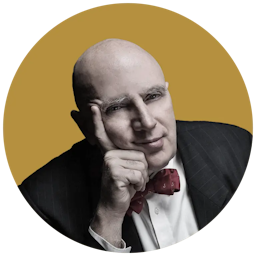Way Out There
This article is from the archive of The New York Sun before the launch of its new website in 2022. The Sun has neither altered nor updated such articles but will seek to correct any errors, mis-categorizations or other problems introduced during transfer.

Bill Dixon opened the Third Annual Festival of New Trumpet Music on Tuesday night by explaining that this was the first time he had played in a nightclub since the 1960s.
“The new music of the era didn’t work in clubs then,” he said, implying that avant-garde jazz would eventually find a home in lofts and other alternative performance spaces. “But now I am happy to be here, because audiences today are better informed.” Still, Mr. Dixon, who turns 80 in October, felt compelled to end his speech on an almost apologetic note: “I do not intend to make your evening uncomfortable.”
No such luck. A significant portion of the Jazz Standard audience soon began squirming – though they were outnumbered by the longtime followers of Mr. Dixon, who hung on every sound that came out of his trumpet. I have attended multiple performances by Mr. Dixon at Tonic, the Knitting Factory, three Vision Festivals, and now three years of FONT, yet I have never heard anything as extreme as his music. It’s not hard to listen to – he’s not a “scary” screaming player, like the late Albert Ayler – but it is hard to comprehend.
Free jazz of the sort one hears in mainstream clubs these days often begins with “outside” playing and then resolves into something more conventionally melodic or tonal. Sometimes it’s the other way around; advanced bop performers will take an improvisation farther and farther out into free territory, and then bring it back home. But as Mr. Dixon rightly pointed out, it is rare to find a completely free, completely outside performance that starts there and stays there.
That’s exactly what Mr. Dixon delivered on Tuesday night. He didn’t make conventional – or even unconventional – notes and melodies. Rather, he modified his trumpet with various kinds of electronic delay and echo devices, and employed the microphone as if it were an active tool rather than just a passive relay. He put the bell of the trumpet around the mic, emitting a vast array of non-tempered sounds – at first hearing, you wouldn’t necessarily assume you were listening to a musical instrument. The sound resembled a series of whale calls, especially since the reverberation lent it an open-air, aquatic feeling.
Mr. Dixon was accompanied by the fine pianist Borah Bergman, who, like him, has worked in many settings, and the cellist Glynis Loman. At times all three musicians seemed to be going into business for themselves, as Jimmy Durante used to say, playing lines that had no connection with what the others were playing. At other times they were truly in cahoots – even if they were creating pure chaos. Much of the time, Mr. Bergman accompanied Mr. Dixon with a piano melody that was not only conventional but almost classical. The point seemed to be to make Mr. Dixon’s whale sounds seem even farther out.
Even 40 years ago, Mr. Dixon had developed a sound that was as far removed from that of “First Wave” avantgarde innovators – Ornette Coleman, Don Cherry, Cecil Taylor – as their music had been from their predecessors’. But like many longtime leaders in avant-garde jazz, Mr. Dixon is more than an instrumentalist, or even a composer and bandleader: He is an educator, a theorist, an organizer of institutions as well as melodies and bands.
To my ears, his playing works best in a larger, more formal context than what we experienced Tuesday night. On the classic “Conquistador!” (1966), he played sideman to the pianist Cecil Taylor. His “Intents and Purposes” (1966), one of the only freejazz albums ever produced by RCA Records, also featured the outstanding reed players Byard Lancaster and Robin Kenyatta, along with John Coltrane’s most famous bassists, Jimmy Garrison and Reggie Workman. On the 1996 album “The Enchanted Messenger,” a collaboration with the British drummer-composer Tony Oxley, Mr. Dixon has a whole orchestra, including strings, reeds, brass, and even electronics, for contrast. At the Jazz Standard, on the other hand, his trumpet sounds became their own context: He was the foreground as well as the backdrop.
Was I relieved when the single, uninterrupted 45-minute piece was finished? Admittedly, yes. Was I glad I was there to hear it? Very much so. Will Mr. Dixon’s playing inspire me in the future to think differently about the nature of music and sound? It already has.

